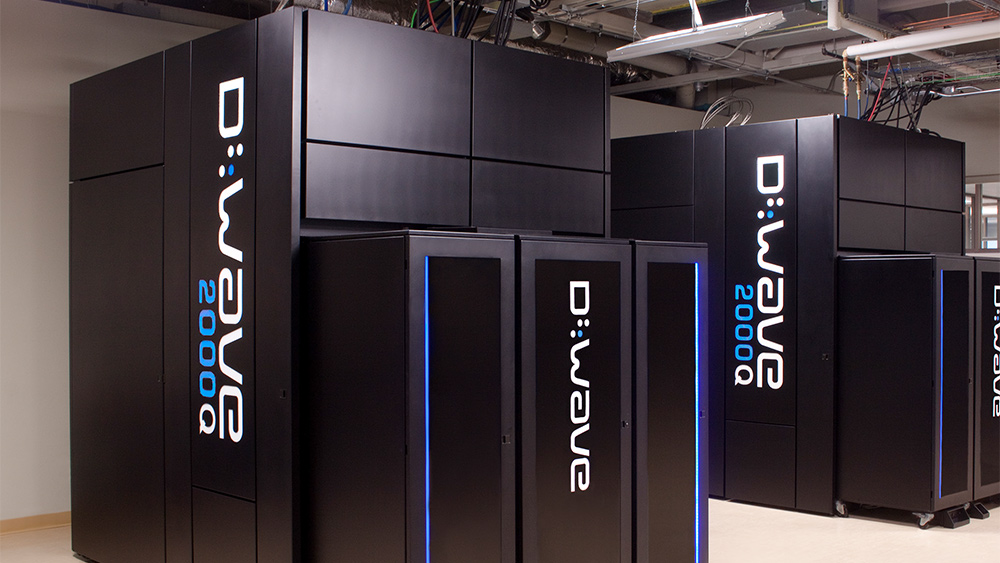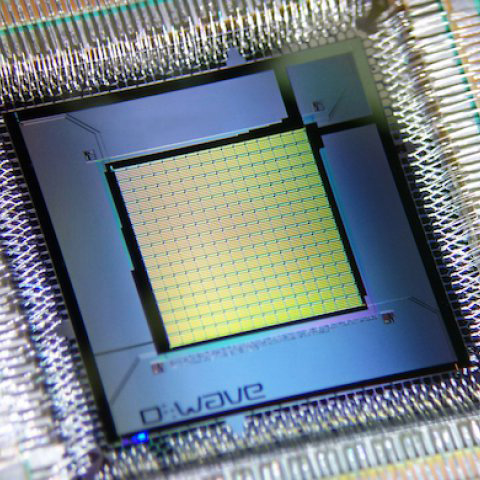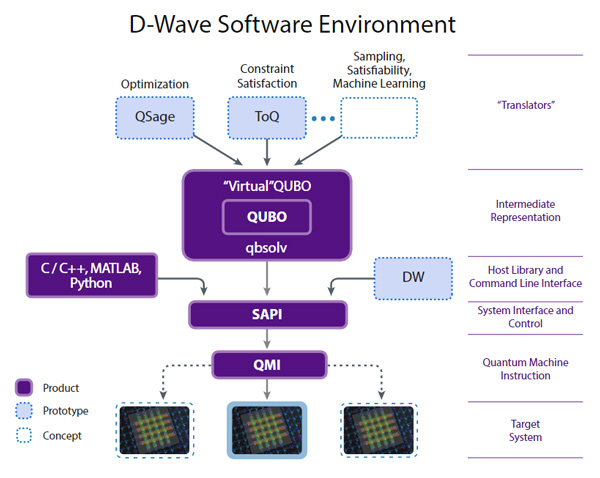IT’S HERE: D-Wave announces 2048-qubit quantum computing system, theoretically capable of breaking all classical encryption, including military-grade
09/24/2019 / By Mike Adams

Over the last several days, we’ve highlighted the stunning breakthrough in “quantum supremacy” announced by Google and NASA. Across other articles, we’ve revealed how quantum computing translates highly complex algorithmic computational problems into simple, linear (or geometric) problems in terms of computational complexity. In practical terms, quantum computers are code breakers, and they can break all known classical encryption, including the encryption used in cryptocurrency, military communications, financial transactions and even private encrypted communications.
As the number of qubits (quantum bits) in quantum computers exceeds the number of bits used in classical encryption, it renders that encryption practically pointless. A 256-qubit quantum computer, in other words, can easily break 256-bit encryption. A 512-bit qubit computer can break 512-bit encryption, and so on.
Those of us who are the leading publishers in independent media have long known that government-funded tech advancements are typically allowed to leak to the public only after several years of additional advances have already been achieved. Stated in practical terms, the rule of thumb is that by the time breakthrough technology gets reported, the government is already a decade beyond that.
Thus, when Google’s scientists declare “quantum supremacy” involving a 53-qubit quantum computer, you can confidently know that in their secret labs, they very likely already have quantum computers operating with a far greater number of qubits.
At the time we were assembling those stories, we were not yet aware that D-Wave, a quantum computing company that provides exotic hardware to Google and other research organizations, has announced a 2048-qubit quantum computer.
The system is called the “D-Wave 2000Q” platform, and it features 2048 qubits, effectively allowing it to break military-grade encryption that uses 2048 or fewer encryption bits.
As explained in a D-Wave Systems brochure:
The D-Wave 2000Q system has up to 2048 qubits and 5600 couplers. To reach this scale, it uses 128,000 Josephson junctions, which makes the D-Wave 2000Q QPU by far the most complex superconducting integrated circuit ever built.
Other facts from D-Wave about its superconducting quantum computing platform:
- The system consumes 25 kW of power, meaning it can be run on less electricity than what is typically wired into a residential home (which is typically 200 amps x 220 v, or 44 kW).
- The system produces virtually no heat. “The required water cooling is on par with what a kitchen tap can provide,” says the D-Wave brochure.
- The system provides a platform for truly incredible improvements in computational efficiency involving machine learning, financial modeling, neural networking, modeling proteins in chemistry and — most importantly — “factoring integers.”
“Factoring integers” means breaking encryption
The “factoring integers” line, found in the D-Wave brochure, is what’s causing unprecedented nervousness across cryptocurrency analysts right now, some of whom seem to be pushing the bizarre idea that quantum computers are an elaborate hoax in order to avoid having to admit that quantum computing renders cryptocurrency cryptography algorithms obsolete. (At least as currently structured, although perhaps there is a way around this in the future.)
“Factoring integers” is the key to breaking encryption. In fact, it is the extreme difficulty of factoring very large numbers that makes encryption incredibly difficult to break using classical computing. But as we have explained in this previous article, quantum computing translates exponentially complex mathematical problems into simple, linear (or you could call it “geometric”) math, making the computation ridiculously simple. (In truth, quantum computers are “computing” anything. The universe is doing the computations. The quantum computer is merely an interface that talks to the underlying computational nature of physical reality, which is all based on a hyper-computational matrix that calculates cause-effect solutions for all subatomic particles and atomic elements, across the entire cosmos. Read more below…)
Depending on the number of bits involved, a quantum computer can take a problem that might require literally one billion years to solve on a classical computer and render a short list of likely answers in less than one second. (Again, depending on many variables, this is just a summary of the scale, not a precise claim about the specifications of a particular system.)
Given that D-Wave’s quantum computers cost only a few million dollars — while there are billions of dollars worth of crypto floating around that could be spoofed and redirected if you have a system that can easily crack cryptography — it seems to be a matter of economic certainty that, sooner or later, someone will acquire a quantum computing system and use it to steal cryptocurrency wallets by spoofing transactions. To be clear, I’m sure D-Wave likely vets its customers rather carefully, and the company would not knowingly provide its quantum computing tech to an organization that appeared to be motivated by malicious intent. Yet, realistically, we’ve all seen historical examples of advanced technology getting into the hands of twisted, evil people such as those who run the Federal Reserve, for example.
D-Wave quantum computers don’t really “compute” anything; they send mathematical questions into multiple dimensions, then retrieve the most likely answers
So how does quantum computing really work? As we’ve explained in several articles, these systems don’t really carry out “computing” in the classic work sense of the term. There is no “computing” taking place in the D-Wave hardware. The best way to describe this is to imagine quantum computers as computational stargates. They submit mathematical questions into a hyper-dimensional reality (the quantum reality of superposition, etc.), and the universe itself carries out the computation because the very fabric of reality is mathematical at its core. As some brilliant scientists say, the universe IS mathematics, and thus the fabric of reality cannot help but automatically compute solutions in every slice of time, with seemingly infinite computational capability down to the subatomic level.
Put another way, the world of quantum phenomena is constantly trying out all possible combinations and permutations of atomic spin states and subatomic particles, and it naturally and automatically derives the best combination that achieves the lowest energy state (i.e. the least amount of chaos).
The end result is that a short list of the best possible solutions “magically” (although it isn’t magic, it just seems like magic) appears in the spin states of the elements which represent binary registers. Thus, the answers to your computational problems are gifted back to you from the universe, almost as if the universe itself is a God-like computational guru that hands out free answers to any question that you can manage to present in binary. (Technically speaking, this also proves that the universe was created by an intelligent designer who expresses creation through mathematics.)

Programmers can easily break encryption codes using standard C++ commands that interface with the quantum portal
All of these quantum functions, by the way, are controlled by standard computer language code, including C++, Python and MATLAB. The system has its own API, and you can even submit commands to the quantum realm via its “Quantum Machine Instruction” (QMI) commands. As D-Wave explains in its brochure:
The D-Wave 2000Q system provides a standard Internet API (based on RESTful services), with client libraries available for C/C++, Python, and MATLAB. This interface allows users to access the system either as a cloud resource over a network, or integrated into their high-performance computing environments and data centers. Access is also available through D-Wave’s hosted cloud service. Using D-Wave’s development tools and client libraries, developers can create algorithms and applications within their existing environments using industry-standard tools.
While users can submit problems to the system in a number of different ways, ultimately a problem represents a set of values that correspond to the weights of the qubits and the strength of the couplers. The system takes these values along with other user-specified parameters and sends a single quantum machine instruction (QMI) to the QPU. Problem solutions correspond to the optimal configuration of qubits found; that is, the lowest points in the energy landscape. These values are returned to the user program over the network.

In other words, breaking cryptography is as simple as submitting the large integer to the quantum system as a series of bits which are then translated into electron spin states by the quantum hardware. From there, a “go” command is issued, and the universe solves the equation in a way that automatically derives the best combinations of multiple qubit spin states to achieve the lowest overall energy state (i.e. the simplest solution with the least chaos). A short list of the best possible factors of the large integer are returned in a time-sliced representation of the binary registers, which can be read over a regular network like any subroutine request.
From there, a classical computer can then try factoring the large integer with the short list of the best answers from the quantum system, using standard CPUs and code logic. Within a few tries from the short list, the correct factors are easily found. Once you have the factors, you now have the decryption keys to the original encrypted message, so decryption is effortless. In effect, you have used quantum computing to “cheat” the keys out of the system and hand them to you on a silver platter. (Or, in some cases, a holmium platter lined with platinum, or whatever exotic elements are being used in the quantum spin state hardware.)
Any competent programmer who has access to this technology, in other words, can break encryption almost without effort. The programming logic is not complex at all. The difficulty in such systems is in the hardware control systems, including spin state “reads” and “writes,” which are strongly affected by temperature and electromagnetic interference. The exotic hardware is the real breakthrough in all this, not the computational part. (Quantum computers are physics oracles, in a sense. The physics is the challenge, not the computer code.)
Most people cannot grasp quantum computing, but that’s not a reason to pretend it isn’t real
One of the more curious things I’ve found recently is that some writers and publishers who don’t understand quantum computing are trending in the direction of pretending it doesn’t exist. According to some, Google’s 53-qubit announcement was a hoax, which must also mean that, in their view, D-Wave Systems isn’t real and doesn’t sell quantum computers at all.
That is not a rational position. There’s no doubt that D-Wave is a real company with real hardware, and that Google already possesses 2048-qubit quantum computing capabilities. Furthermore, Google and the NSA have every reason to keep this fact secret for as long as possible, so that they can continue to scrape everyone’s “encrypted” emails and financial transactions, all of which can be retroactively decrypted any time the NSA wants to look more closely at your activities.
To me, it has long been obvious that the cosmos itself is inherently computational. Just look at the collapse of probability waves found in the orbital shells of electrons. It should be self-evident that the universe is computing solutions at the subatomic level in every instant, effortlessly and without apparent cost. The very framework of the cosmos is driven by mathematics and rapid computational solutions. Once you realize how much subatomic phenomena is quantized, it becomes blatantly apparent that the universe is digitized and mathematical. The entire construct in which we exist, in other words, is a mathematical simulation, perhaps created by God for the purpose of amusing himself by watching our collective stupidity.
D-Wave Systems, by the way, knows exactly what’s up with all this. Their goal is to make quantum computing available to the masses. They also seem to hint at the hyperdimensional reality of how quantum computing works. From their brochure: (emphasis added)
While the D-Wave quantum computer is the most advanced in the world, the quantum computing revolution has only begun. Our vision is of a future where quantum computers will be accessible and of value to all, solving the world’s most complex computing problems. This will require advances in many dimensions and contributions from experts in diverse domains. It is exciting to see increasing investment worldwide, advances in research and technology, and a growing ecosystem of developers, users, and applications needed to deliver on that vision.
I can tell that the D-Wave people are some very smart folks. Maybe if these systems get at least an order of magnitude less expensive, we could buy one, install it in our mass spec lab, and start throwing computational questions at the universe.
Personally, if I had one of these systems, I would use it to solve protein folding questions for all the obvious reasons. Then I would probably have it start looking for blood and urine biomarkers for cancer. You could make a fortune applying quantum computing to solving horse race betting and handicapping equations, but that would seem silly compared to what the system is really capable of. Another application would be solving atomic decay patterns to derive the best way to synthesize antimatter, which can be used to power faster-than-light drive systems. (Which I cover at OblivionAgenda.com in a series of lectures. The FTL lectures have yet to be posted there, but are coming soon.)
Sadly, the deep state will probably use this technology to surveil humanity and enslave everyone with AI facial recognition and “precrime” predictive accusations that get translated into red flag laws. Once the tech giants profile you psychologically and behaviorally, a quantum computing system can easily compute your likelihood of becoming the next mass shooter. You could be found guilty by “quantum law” even if you’ve never pulled the trigger.
As with all technologies, this one will be abused by governments to control and enslave humanity. It doesn’t mean the technology is at fault but rather the lack of morality and ethics among fallen humans.
Read more about science and computing at Science.news.
Submit a correction >>
Tagged Under:
big government, breakthrough, computing, cryptocurrency, D-Wave, decryption, encryption, inventions, quantum computing, qubits, surveillance
This article may contain statements that reflect the opinion of the author
RECENT NEWS & ARTICLES
COPYRIGHT © 2017 RESIST NEWS





















